Rachel Carson: Catalyst of the Environmental Movement


Carson Gains Widespread Support
President John F. Kennedy supported Carson's cause. His staff collaborated with her to gain public support to offset the backlash from the chemical industry. His support gained her nationwide recognition.
Carson managed to find time to volunteer for Kennedy’s campaign. In the weeks leading up to Kennedy’s nomination, Carson served on the Natural Resources Committee of the Democratic Advisory Council. She hoped that in late 1962, when Silent Spring would be published, Kennedy would occupy the White House, leading a mainstream effort to slay the dual dragons of pollution: radioactive and chemical contamination of the environment. The advisory council embraced Carson’s anti-pollution ideas. Her dear friend Pare Lorentz, a film producer, wrote the council’s far-reaching report on pollution control, with input from Carson. They recommended that Kennedy, if elected, create a Bureau of Environmental Health within the U.S. Public Health Service. Carson envisioned this prototype for the Environmental Protection Agency wielding regulatory jurisdiction over “our one imperative resource: the environment in which all of us live.”
~ Douglas Brinkley, AUDOBON Magazine, May-June 2012
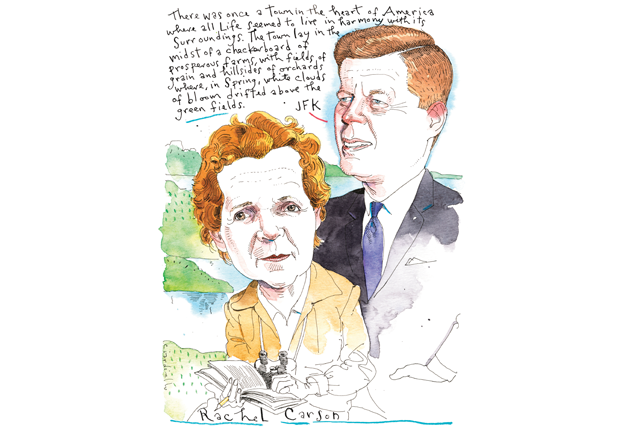
CARSON AND CAMELOT, Illustration by Joe Ciardiello, Audobon, May-June 2012
"In the spring of 1962, The New Yorker published Rachel Carson’s anti-pesticide manifesto, Silent Spring, in three installments. Carson’s message quickly transcended the magazine’s readership, eliciting a national response that would eventually lead to a federal ban on DDT for agricultural use and the creation of the EPA. "
~ David Gessner, "Rachel's War," Sierra Club website, posted March 15, 2016.
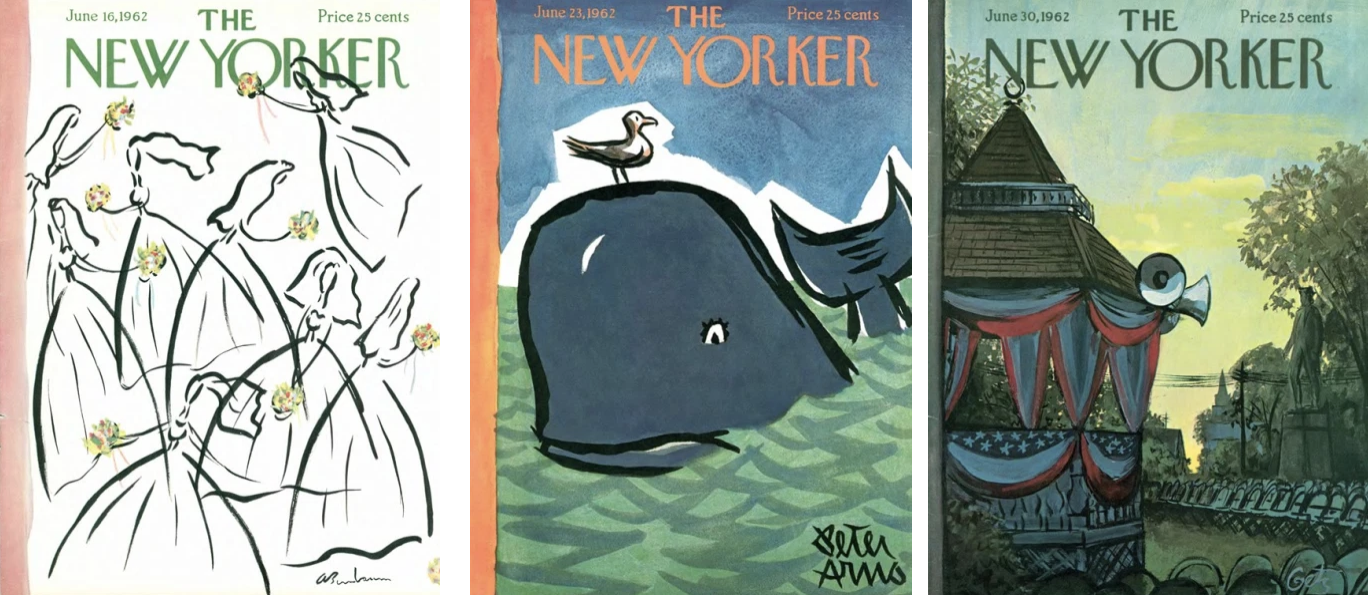
The New Yorker, June 16, 23 and 30, 1962 covers
CLICK BELOW TO VIEW ALL THREE INSTALLMENTS, SLIDING RIGHT TO VIEW EACH
“President John F. Kennedy, having read Rachel Carson’s books already published on the sea and being an environmentalist himself, was quick to defend her when the Chemical companies began to try to discredit her. What companies like American Cyanamid, Velsicol, and Monsanto would soon learn was that the Kennedy administration was setting up Big Chemical as the culprit of the planet’s worse environmental desecrations...Kennedy made clear that his administration took ‘Silent Spring’ seriously. Because of ‘Miss Carson’s book,’ Kennedy said in a televised press conference, ‘the Department of Agriculture and the Public Health Service had launched a full-blown investigation into whether pesticides caused illnesses in humans.’”
~ Douglas Brinkley, AUDOBON Magazine, May-June 2012
Rachel Carson travelled to promote her book, even though her health was failing. She appeared on Eric Servareid on CBS News Reports, 3 April 1963
"CBS’s producers had worked for months, interviewing not only Carson but interviewing other experts about pesticides and their potential dangers. The result was an erosion of support for government officials and a big blow to the chemical industry."
~ Anna Nevenic, "Rachel Carson, Guru of the Environment" 2005
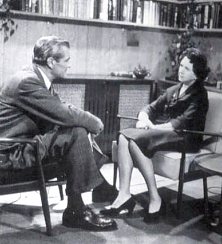
Rachel Carson interview with Eric Sevareid, CBS Reports, aired 3 April 1963...
“The book, which was published on Sept. 27, 1962, flew off the shelves, owing largely to its three-part serialization in The New Yorker that summer. ‘Silent Spring’ was also selected for the Book-of-the-Month Club, which delighted Carson. But nothing established Carson more effectively than her appearance on ‘CBS Reports,’ an hourlong television news program hosted by a former war correspondent, Eric Sevareid.”
~ Eliza Griswold, The New York Times Magazine, September 2012
Because of her work, environmental interest groups were formed, such as Friends of the Earth, Rachel Carson Society, and Greenpeace, to spread Carson's message.
CLICK RIGHT TO VIEW SPEECH, SLIDING BAR ON RIGHT TO VIEW
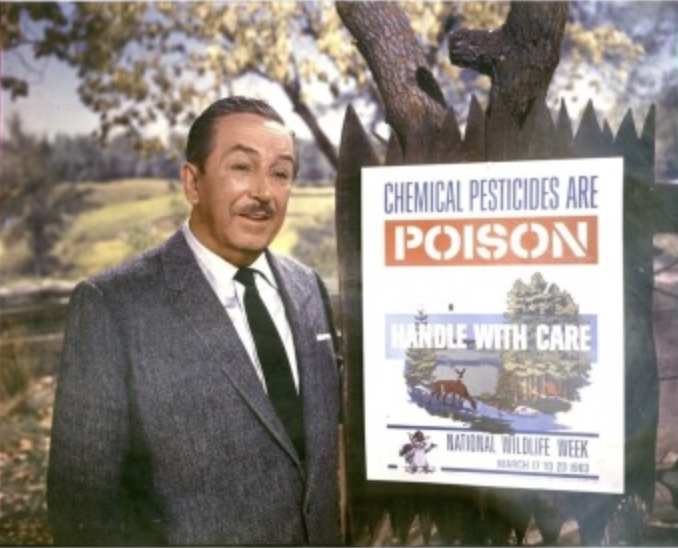
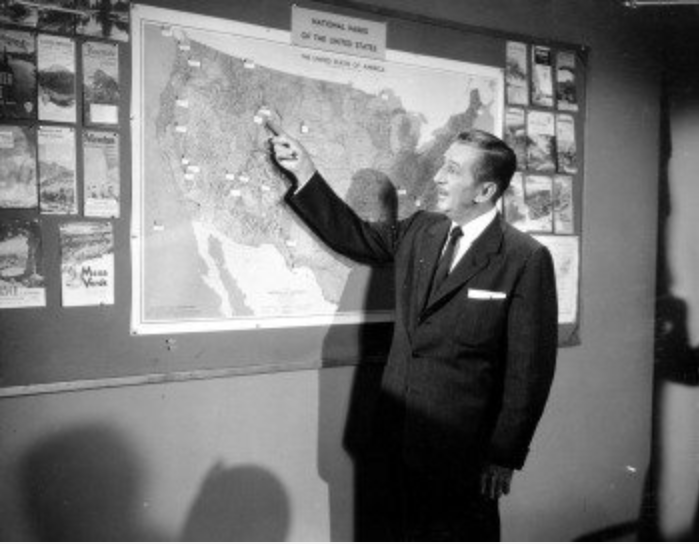
Walt Disney, courtesy of Walt Disney Family Museum, 1963
"In 1962, [Rachel Carson’s] book Silent Spring belatedly brought “the basic irresponsibility of an [ever more] industrialized technological society toward the natural world” to the public’s attention. Hardly by coincidence, President Kennedy responded by creating a special panel of his Science Advisory Committee to study long-term problems created by uncontrolled chemical spraying, setting ecology into place as a significant sixties issue. Carson was hardly the only person hammering home such ideas; similar concepts were advanced by social critic Paul Goodman, German philosopher Herbert Marcuse, and anarchist-ecologist Murray Bookchin (aka Lewis Herber) among others. All proceeded from a single concept, considered radical at the time: “The history of life on earth has been a history of interaction between living things and their surroundings,” a natural balance now endangered by human meddling."
Walt Disney quoted by Douglas Brode in this excerpt from his book, From Walt to Woodstock: How Disney Created the Counterculture.